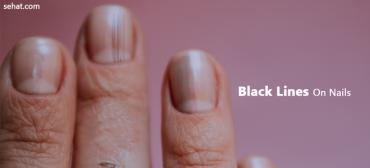Hyperbaric Oxygen Therapy for Wound Healing (HBOT)
(Hyperbaric Medicine, Hyperbarics)
Hyperbaric oxygen therapy involves exposing the body to 100 percent oxygen at a pressure that is greater than what you normally experience. Wounds need oxygen to heal properly, and exposing a wound to 100 percent oxygen can, in many cases, speed the healing process.
Procedure overview
Hyperbaric oxygenated therapy can be done in a number of ways. It can be given in a special type of room called a hyperbaric oxygen chamber and in which you are completely immersed in 100 percent oxygen. It can also be given through a gas mask. In some instances, “topical” hyperbaric oxygen therapy can be applied to just one part of the body. If the wound is on your leg, for example, your leg could be wrapped in a plastic bag that is filled with 100 percent oxygen. Although this localized form of topical oxygen therapy is easier to do and more affordable, its effectiveness compared with the other forms of hyperbaric oxygen therapy is questionable, according to the latest research.
Reasons for the procedure
A number of studies have shown that hyperbaric oxygen therapy does speed wound healing for many types of wounds. Research has shown that it’s helpful for:
-
Delayed radiation injuries
-
Soft tissue infections
-
Thermal burns
-
Certain skin grafts and flaps
-
Crush injuries
-
Diabetes-related wounds
A recent article reviewed the results of 64 separate studies on hyperbaric oxygen therapy and wound healing and concluded that the treatment is effective at healing wounds and, in turn, reducing the risk of amputation, particularly among people with diabetes.
Risks of the procedure
Side effects of hyperbaric oxygen therapy are extremely rare but include:
-
Pressure-related trauma to the ears or nose, which happens in 52 of every 10,000 cases
-
Nearsightedness
-
Nonlife-threatening convulsions related to oxygen toxicity
-
Decompression sickness
A few patients with severe congestive heart failure have experienced additional problems with heart function after hyperbaric oxygen therapy. Occasionally, fires can occur in the chamber.
During the procedure
Some facilities have a large hyperbaric oxygen chamber that can treat up to a dozen people at a time. But the typical hospital has what is known as a monoplace, which is equipment for just one person.
Here is what usually happens during a hyperbaric oxygen therapy session:
-
You will likely be asked to remove your clothing and wear a medical gown.
-
You will lie on a table that slides into the monoplace, a clear plastic tube that’s about seven feet long.
-
You will be asked to relax and breathe normally during the procedure.
-
The chamber will be sealed and then filled with pressurized oxygen.
-
The pressure will rise to 2.5 times the normal air pressure, and you may experience some ear popping or mild discomfort. This is completely normal.
-
The session will last anywhere from 30 minutes to two hours.
-
After the therapy, technicians will slowly depressurize the chamber.
After the procedure
Once your hyperbaric oxygen therapy session is complete, you may feel lightheaded or tired. These symptoms will usually go away after a short period of time.
The number of hyperbaric oxygen therapy treatments you will need depends on the extent of your wound and how well the wound responds to therapy.
Related Questions
Mantoux Test Query
- 3853 Days ago
- Tests & Procedures
My Rheumatoid Factor is - H 74 IU/mL
- 4012 Days ago
- Tests & Procedures
Suffering from piles
- 4133 Days ago
- Tests & Procedures
widal positive
- 4247 Days ago
- Tests & Procedures
Whitish viscosity
- 4256 Days ago
- Tests & Procedures
LINAC procudure, 3DRT and IMRT
- 4270 Days ago
- Tests & Procedures
Ecg of heart showed T wave changes
- 4311 Days ago
- Tests & Procedures
CT Coronary Angiography
- 4295 Days ago
- Tests & Procedures





















